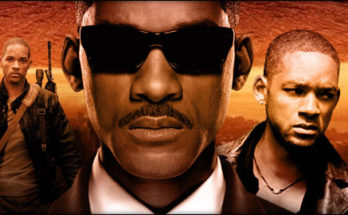Aren’t lions and cheetahs supposed to be majestic, noble creatures, far disposed from the greed and war-obsessed human animals? They may still be visually stunning felines, but in Disney’s African Cats we’re offered a rather vicious vision of hostile takeovers, rivalrous siblings, and brutal skirmishes like some Kurosawa-style tale of ancient feudal warlords battling for power and land (or even a modern power-hungry gangster flick). The film steps back from its documentary roots to effectively dramatize the adventures of two mothers raising their cubs by presenting clear cut heroes and villains, thundering musical cues, and Samuel L. Jackson’s overly enthusiastic narration. Manipulative though it may be, it’s still impressive to see the emotions evoked through the personified cats and their unbreakable familial bonds.
Following the courageous spirits and actions of two feline mothers, African Cats tracks Sita, a cheetah with a litter of five cubs, and Leila, a lioness with a sole daughter, Mara, as they selflessly defend their children from the constant perils present in the lawless wilds of Kenya. As a single parent, Sita must train her cubs to become independent while protecting them from vicious hyenas, hungry lions, and even others of her kind. Though momentarily protected as a member of a pride of lions led by broken-toothed Fang, Leila must nurture Mara and also plan for her daughter’s future when she becomes injured and knows the pack cannot support an old lioness unable to aid in the hunt. But the dangers of territorial predators and pressures from a migrating food supply pale in comparison to the threat of an impending invasion by calculating lion Kali who ceaselessly attempts to usurp the pride from Fang with his entourage of four sizeable sons.
It’s nice to think that there are no camera crews or fancy editing tricks interfering with Mother Nature; that we’re watching wildlife untouched and unmarred by human contact. African Cats does a novel job of creating this illusion; however, the intrusion of the narrator’s recognizable voice – giving a rendition of events particularly agog – the suspenseful slow motion, and the stirring music, grants a dramatic (sometimes overdramatic) portrait of otherwise basic activities. It’s important for them to carefully establish the cheetahs and lionesses as the protagonists to prevent audiences from questioning what has happened to the buffalo and zebra families when their young are devoured.
A gazelle hunt, a cheetah cleaning her young, a lion and crocodile showdown, territorial conquests, aardvarks playing, or a frightened turtle are all given a level of drama, stories and personalities, as if they’re actors in a play. Jaws-like music, horror movie manipulation, affectionate tenderness and light humor work their way into the mix, presenting a premise with a beginning, middle and end, like a true work of fiction. Fortunately, it still works as a documentary, revealing interesting facts and the awe of animal interaction, all while concealing blood, carcasses and the more tragic stuff. It’s also not entirely for kids, as much of it is genuinely heart pounding or horrific. It’s only slightly overlong and the tiniest bit repetitive, making up ground by examining the circle of life for solitary cheetahs and pride-hunting lions, each with an uncanny will to survive amidst treacherous odds, environments and enemies.


